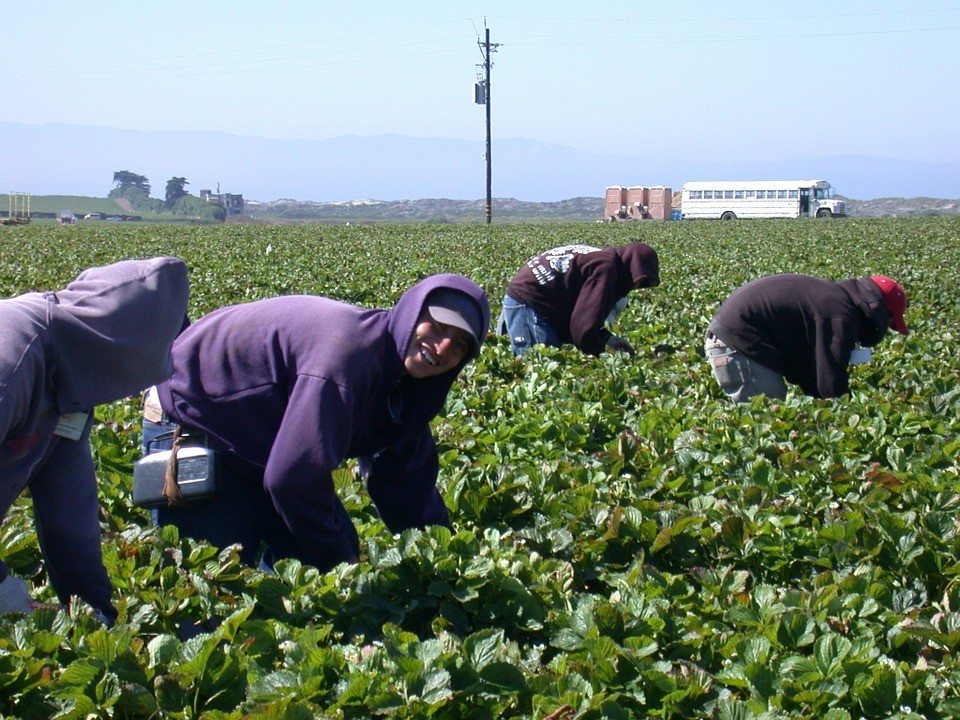29
Oct
EPA Moves to Weaken Pesticide Exclusion Zones Intended to Protect Farmworkers and Their Families
 (Beyond Pesticides, October 29, 2019) The U.S. Environmental Protection Agency is proposing changes to the way farmworkers and bystanders are protected from toxic pesticide applications, per an announcement published on the agency’s website last week. Billed as “improvements” that will “reduce regulatory burdens for farmers,” the actions would instead significantly shrink Application Exclusion Zones (AEZs), buffer areas where individuals are not supposed to enter during a pesticide application.
(Beyond Pesticides, October 29, 2019) The U.S. Environmental Protection Agency is proposing changes to the way farmworkers and bystanders are protected from toxic pesticide applications, per an announcement published on the agency’s website last week. Billed as “improvements” that will “reduce regulatory burdens for farmers,” the actions would instead significantly shrink Application Exclusion Zones (AEZs), buffer areas where individuals are not supposed to enter during a pesticide application.
Health and justice advocates say the move will put farmworkers at risk. “Although the proposal is framed as a narrow revision, it would in fact eliminate, reduce or weaken various AEZ provisions,” said Farmworker Justice attorney Iris Figueroa to Politico. “These changes threaten to increase exposure to toxic pesticide drift for farmworkers and their families.”
EPA’s proposal, announced in a press release featuring the heads of industry associations like the American Farm Bureau, would do the following:
- Make AEZs applicable only to a farm owners’ property. Under the current rules, pesticide handlers were required to keep individuals out of an area where pesticides were applied both on and off site.
- Exempt on-farm family members from all aspects of the AEZ. EPA says this will allow farmers and their family “to decide whether to stay in their homes or …on their property during certain pesticide applications, rather than compelling them to leave even when they feel safe remaining.” Critics note that feeling safe and being safe are very different, one based on emotions and the other on science.
- Clarify that suspended pesticide applications may continue when an individual leaves an AEZ, and revise criteria around determining when a pesticide application is subject to an AEZ. Opposition to the proposal indicates these changes backtrack safety requirements and would shrink the type of pesticide applications covered under this rule.
The agrichemical industry has lobbied against the AEZ and other farmworker protections since they were revised during the Obama administration. The Obama-era revision occurred after 25 years of inaction on farmworker rights and was worked out with both industry and farmworker advocates at the table. Early in Trump’s presidency, then EPA-head Scott Pruitt announced his intent to revisit several provisions that were recently put in place. This included the requirement that farmworkers be 18 to apply highly toxic pesticides, a clause which allows farmworkers have a “designated representative” obtain information about where and when pesticides were applied, and the AEZ.
As recent as October 2018, and even after 28 Senators wrote EPA to oppose any changes, the agency had intended to revise each of these reforms. But it appears that in late 2018, an agreement was reached as part of a deal cut by lawmakers and the administration that permitted confirmation of Alexandra Dunn to the EPA Office of Chemical Safety and Pollution Prevention in exchange for EPA concessions that would improve pesticide safety measures. Beyond Pesticides wrote, “While advocates are generally pleased with the outcome of the apparent deal, the irony that deals needed to be made for an agency with protection in its name to do its job is not lost.”
As noted at the time of the deal, AEZs were not included in this agreement. Last week’s announcement shows EPA delivered for industry interests within the year.
Currently, the average life expectancy for a farmworker is 49 years, compared to 78 for the general population. This is similar to the life expectancy of individuals living in the 1850s and represents a completely unacceptable data point for any industry today in a developed country. It is critical that government agencies work towards enforcing laws agreed to by consensus between industry and advocates, rather than work with industry in its attempts to renege on these deals.
For more information on the plight and daily struggle farmworkers face as they work to put food on the tables of every America, see Beyond Pesticides’ Agricultural Justice webpage.
All unattributed positions and opinions in this piece are those of Beyond Pesticides.
Source: EPA Press Release, Politico










